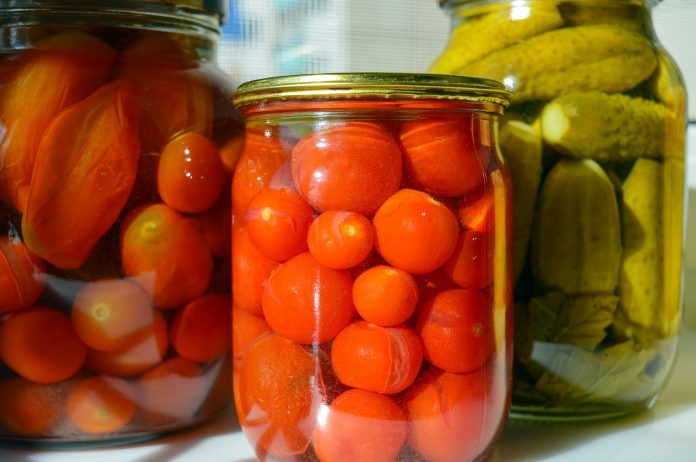There’s a sort of tradition associated with home food preservation. Recipes get passed on from one generation to the next. Unfortunately, those recipes aren’t always consistent with current food safety standards.
If you’re wondering whether or not an old family recipe is safe to use when pickling fruits and vegetables from your garden, use these tips.
Old recipe safety checklist
Check the proportions. Having the right vinegar, food and water proportions plays a huge role in a safe pickling recipe. It ensures an adequate acid level of the food in the jar and determines the time and heat required to ensure food safety. The easiest way to check whether the proportions of your old recipe will work is to find a research-tested recipe, using the same processing method, and compare the ratios of water to vinegar and water and vinegar to food. If your recipe and the recommended recipe call for the same parts of food, water and vinegar in relation to one another, your proportions are probably safe.
Pro tip: The ratio of vinegar to water varies by the vegetable, and some vegetables — onions, mushrooms and artichokes — are pickled in straight vinegar with no water. Make sure you compare your recipe to one for the vegetable you are pickling.
Processing. You definitely want to double-check the time, temperature and processing method your recipe requires. For high acid foods, boiling water (212 F at sea level) is enough to destroy most bacteria, yeasts and molds in a boiling water canner. The time needed to process high acid foods in boiling water varies from 5 to 85 minutes. The boiling time required decreases as temperature increases. For low acid foods, the temperature must be between 240-250 F and the food must be processed in a pressure canner. The time needed to process low acid foods depends on the type of food but will be between 20 and 100 minutes.
Pro tip: Don’t forget to account for your altitude. If you use the processing time for canning food at sea level and you live in an altitude of 1,000 feet or more above sea level, spoilage may result. As altitude increases, water boils at lower temperatures, which can be ineffective for killing bacteria. Make sure you increase processing time or canner pressure accordingly to compensate for lower boiling temperatures at your altitude.
Vinegar. Never use a vinegar with an unknown acidity. Always use a high-grade cider or white distilled vinegar that contains 5 percent acetic acid. Never dilute vinegar and never use homemade vinegar, salad vinegar, wine vinegar or other products with lower acidity.
Pro tip: Older recipes called for a pickling vinegar of 10 percent strength. Using today’s 5 percent vinegar in an old recipe may not yield as crisp a product. If the flavor seems too tart, add a little sugar.
Salt. Double-check your recipe calls for the correct proportions and type of salt. Use a nonionized canning or pickling salt. Avoid reduced salt products. Just as you did when you checked the proportions of food, water and vinegar, compare your recipe with a research-tested recipe to make sure you’re using the right amount of salt. This ensures proper fermentation and optimum taste.
Spices. Some recipes may indicate adding spices to each jar and others may tell you to bundle them in a cheesecloth while cooking the brine. Both methods are safe. Just make sure your spices are free of mold before adding them.
Firming Agents. Alum can be used, but only in recipes for fermented pickled foods. It won’t improve the firmness of quick-packed products. You can also try calcium in lime, which helps improve firmness. However, it has to be food-grade and you have to follow the directions carefully. Vegetables have to be soaked in calcium in lime and rinsed several times.















